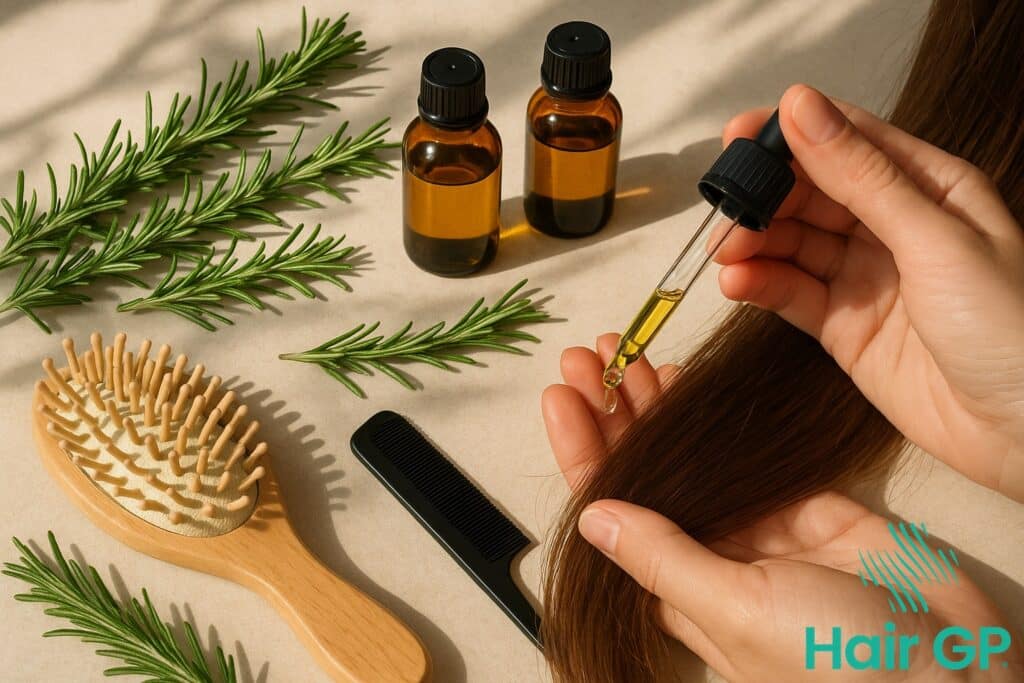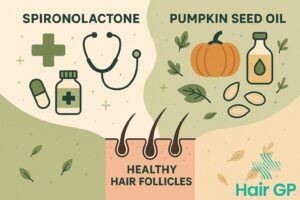Introduction
TikTok users are raving about rosemary oil as the latest miracle cure for hair growth, with countless videos claiming dramatic transformations. From sparse hairlines to fuller locks, social media influencers are showcasing seemingly impressive before-and-after results. But does this ancient herbal remedy truly live up to the viral hype, or is it simply another fleeting beauty trend? This comprehensive guide explores the science behind rosemary oil’s effects on hair follicles, examines real-world results versus social media expectations, and provides practical guidance for safe application. We’ll separate fact from fiction to help you make an informed decision about this trending hair treatment.
Key Takeaways – TL/DR
- TikTok has sparked massive interest in rosemary oil with hundreds of viral videos claiming hair growth benefits
- Scientific research shows rosemary oil may be as effective as minoxidil for promoting hair growth however the study’s are small and not of great quality
- Real results vary by individual, but proper application and realistic expectations are key to success
The TikTok Rosemary Oil Hair Growth Phenomenon
The rosemary oil hair growth trend exploded across TikTok when users began sharing videos showcasing their hair transformation journeys. The hashtag #rosemaryoilforhair has garnered hundreds of millions of views, with creators raving about dramatic results after using the oil for just a few months. These viral videos typically feature before-and-after shots, with users claiming thicker, longer, and healthier hair growth.
What started as isolated posts quickly snowballed into a full-blown phenomenon, with beauty enthusiasts and everyday users alike discovering this ancient remedy through their social media feeds. TikTok creators are sharing DIY recipes, application methods, and progress updates, creating a community of rosemary oil advocates. Many users report discovering rosemary oil’s potential benefits for the first time through these platforms, transforming a traditional herbal remedy into a modern beauty hack that’s captured the attention of millions seeking natural hair growth solutions.
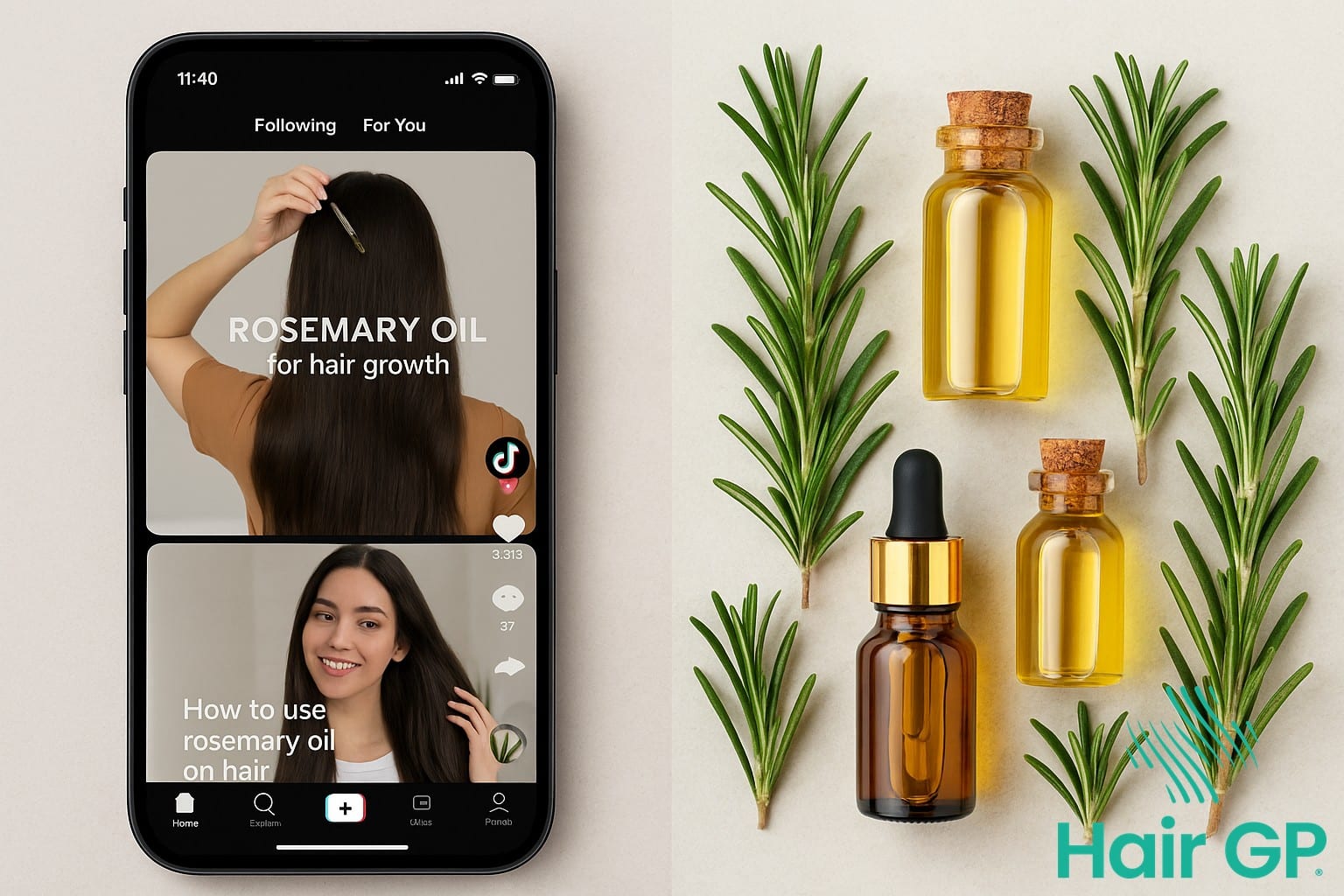
What Science Says About Rosemary Oil for Hair Growth
Scientific research provides compelling evidence supporting rosemary oil’s effectiveness for hair growth and hair loss treatment. Multiple peer-reviewed studies have examined rosemary oil’s impact on hair follicles and scalp health, revealing promising results that rival conventional treatments.
Clinical Research Findings
A landmark six-month clinical trial demonstrated rosemary oil’s remarkable efficacy in treating androgenetic alopecia. The study showed that rosemary oil performed comparably to 2% minoxidil, with both treatments producing significant hair count increases [1]. Participants using rosemary oil experienced notable improvements in hair density and scalp coverage, whilst reporting fewer side effects than the minoxidil group. The research revealed that rosemary oil could effectively promote hair growth through multiple biological pathways affecting hair follicle function.
How Rosemary Oil Works on Hair Follicles
Rosemary oil’s hair growth effects stem from its ability to enhance scalp circulation, delivering essential nutrients to hair follicles. The oil’s active compounds inhibit 5-alpha reductase, reducing DHT production that causes follicle miniaturisation [2]. Additionally, rosemary oil’s antioxidant properties protect follicular cells from oxidative damage, creating an optimal environment for healthy hair growth whilst extending the anagen phase of the hair cycle.
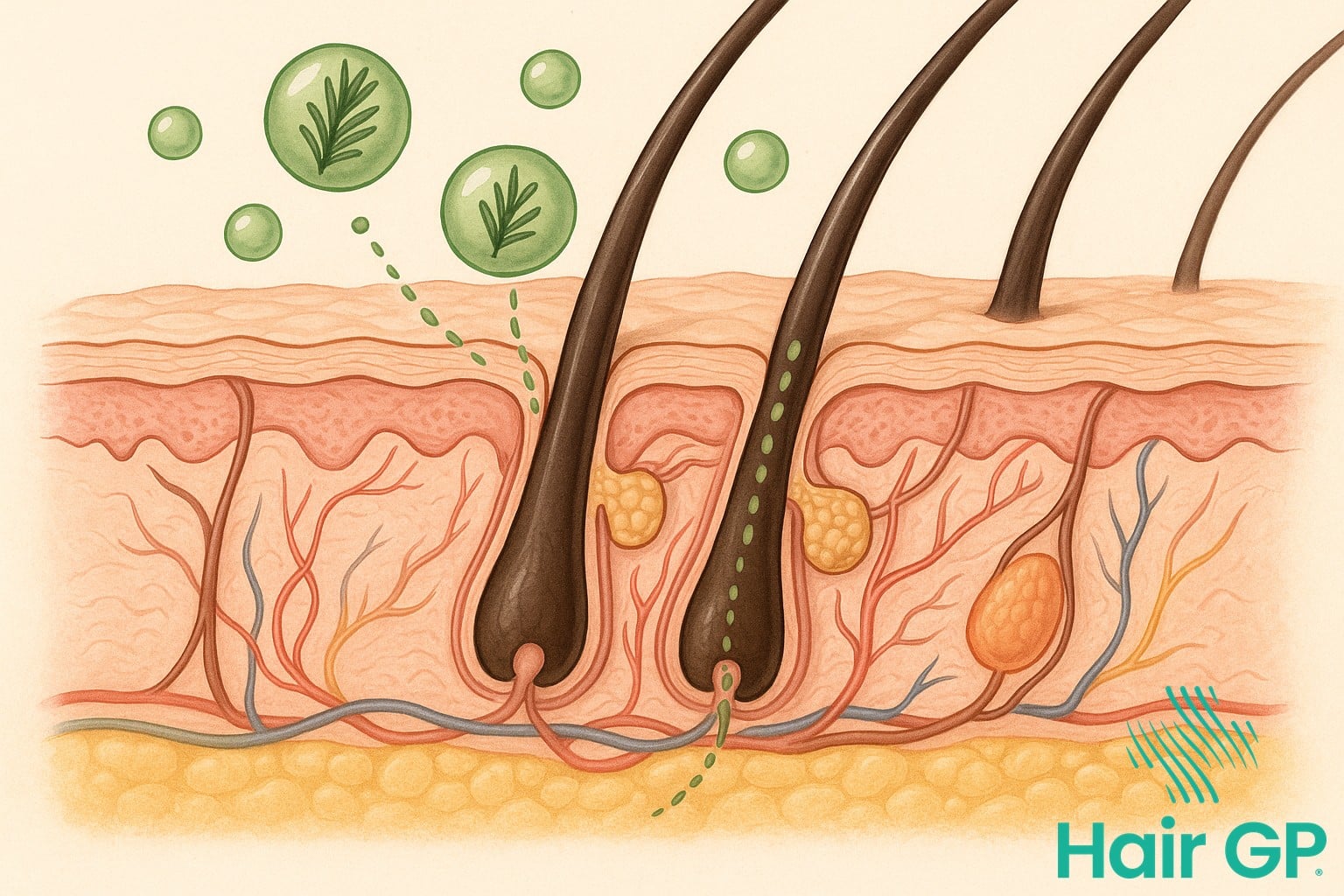
Real Results vs Social Media Hype
While social media showcases impressive transformations, the reality of using rosemary oil for hair growth requires patience and realistic expectations. Most people who see genuine results report improvements after consistent use over several months, not the rapid changes often depicted online. Scientific studies suggest that noticeable hair growth typically occurs after three to six months of regular application.
The viral before-and-after photos circulating on TikTok often compress months of progress into compelling snapshots, creating unrealistic expectations about how quickly rosemary oil can work. In reality, hair naturally grows approximately half an inch per month, regardless of treatment. For those experiencing thinning locks, rosemary oil may help strengthen existing hair and potentially stimulate dormant follicles over time, but results vary significantly between individuals. Understanding these realistic timelines helps set appropriate expectations for your hair growth journey.

How to Use Rosemary Oil Safely for Your Hair Type
Before applying rosemary oil, always dilute it with a carrier oil like jojoba or coconut oil using a 1:10 ratio to prevent scalp irritation. Wash your hands thoroughly after application. For oily or greasy hair types, use the product sparingly once weekly to avoid over-conditioning. Dry hair types can benefit from twice-weekly applications. Massage the diluted oil gently into your scalp using circular motions, focusing on areas of concern. In addition to direct application, consider adding a few drops to your regular shampoo for consistent results.
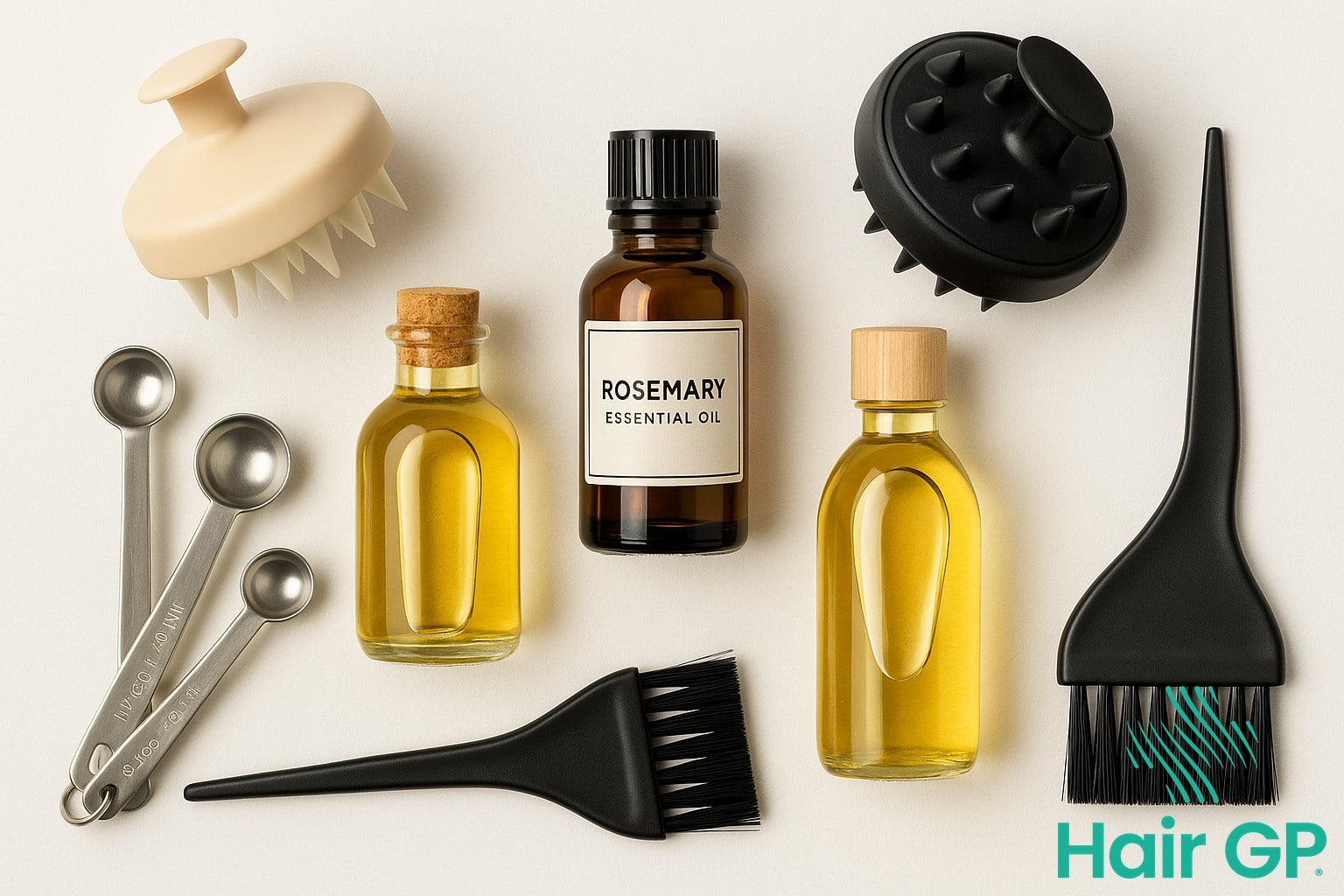
Conclusion
While TikTok’s viral videos have brought rosemary oil into the spotlight, the science behind its hair growth benefits is promising. After examining the research you’ve read throughout this article, it’s clear that this natural remedy offers real potential for those struggling with hair loss, especially for those who prefer natural options as opposed to medical. However, success requires realistic expectations and patience—you won’t find overnight transformations like social media suggests. Instead, commit to consistent application over the course of a year, following proper techniques and maintaining realistic goals. Rosemary oil represents a promising, evidence-based approach to hair growth when used correctly and persistently over time and overall medications such as minoxidil tend to provide better results.
Frequently Asked Questions
Most people see initial results after 3-6 months of consistent use, similar to the timeline for minoxidil. Some may notice improved scalp health and reduced hair loss within 4-6 weeks.
When properly diluted and used in moderation, rosemary oil shouldn’t make hair greasy. Use only 2-3 drops mixed with carrier oil and focus application on the scalp, not hair strands.
Rosemary oil is generally safe for all hair types when properly diluted. However, those with sensitive scalps should patch test first and use lower concentrations initially.
References
- Panahi Y, Taghizadeh M, Marzony ET, Sahebkar A. Rosemary oil vs minoxidil 2% for the treatment of androgenetic alopecia: a randomized comparative trial. Skinmed. 2015;13(1):15-21. PMID: 25842469
- Murata K, Noguchi K, Kondo M, Onishi M, Watanabe N, Okamura K et al.. Promotion of hair growth by Rosmarinus officinalis leaf extract. Phytother Res. 2013. PMID: 22517595

